In the exhilarating, five-goal clash between two football powerhouses, Liverpool and Chelsea, tactical brilliance took center stage, captivating fans worldwide. This article delves into a comprehensive tactical analysis of the showdown, dissecting the strategic maneuvers employed by both teams. From formations to player movements, we unravel the intricate chess match that unfolded on the pitch during this highly anticipated fixture. Join us as we explore the tactical dynamics that influenced the outcome of Liverpool vs Chelsea, shedding light on the strategic decisions that shaped the game’s narrative.
Liverpool
Build-up
Low Build-up
In the low build-up, Liverpool set up in their 1-4-3-3 formation:
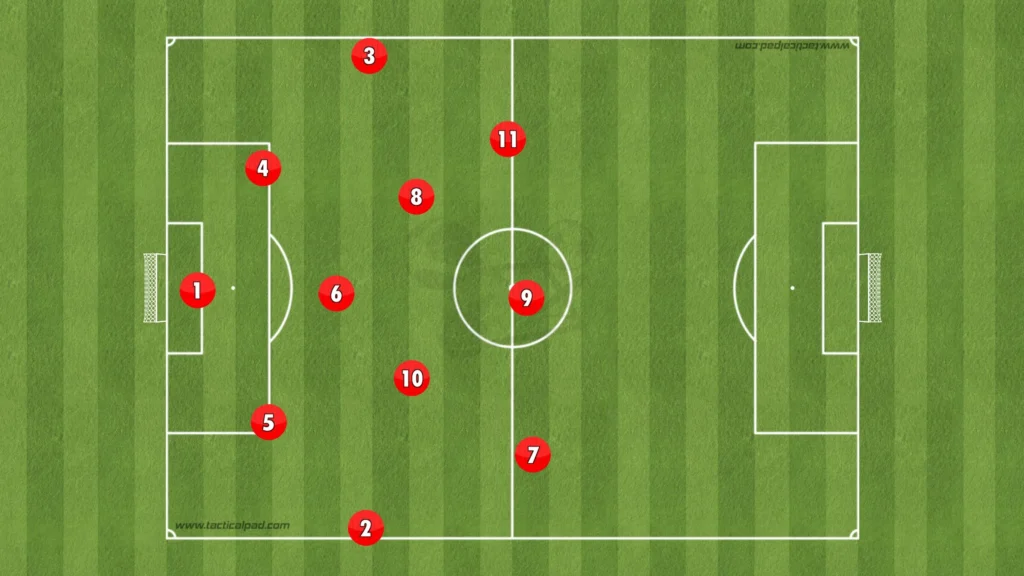
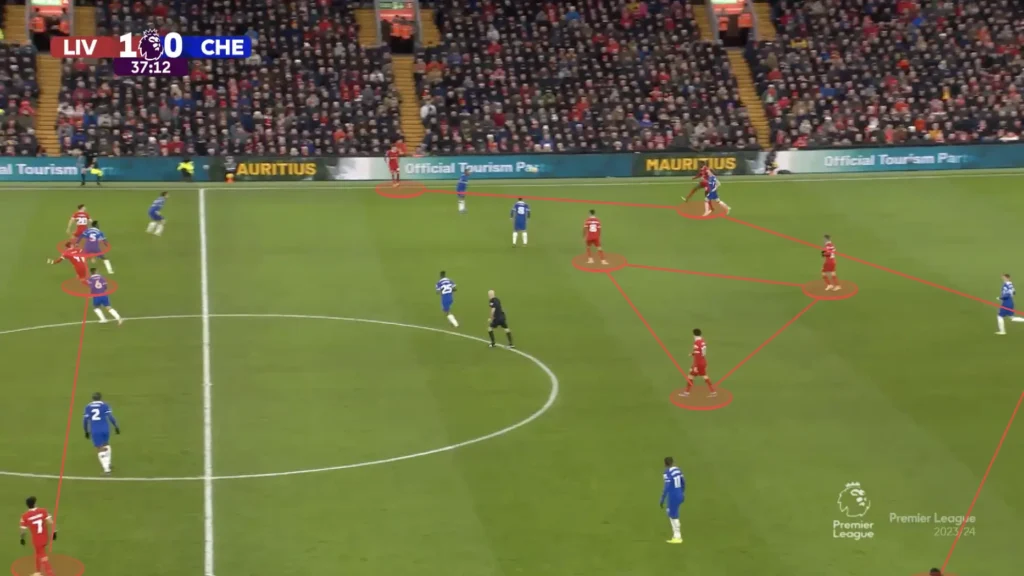
Balls in Behind
Liverpool would try to punish Chelsea’s slower backline with balls in behind for the quick Liverpool forwards.
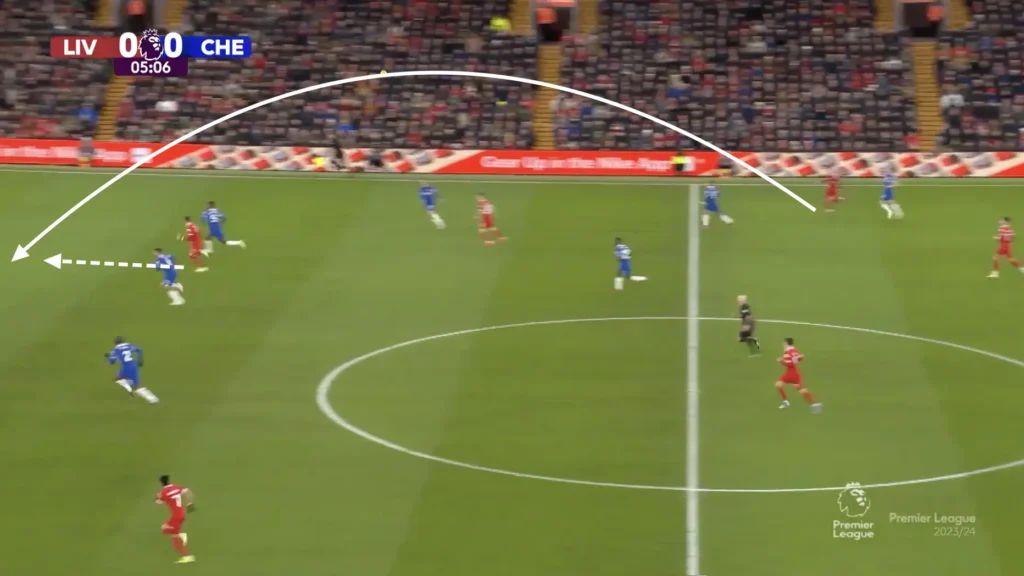
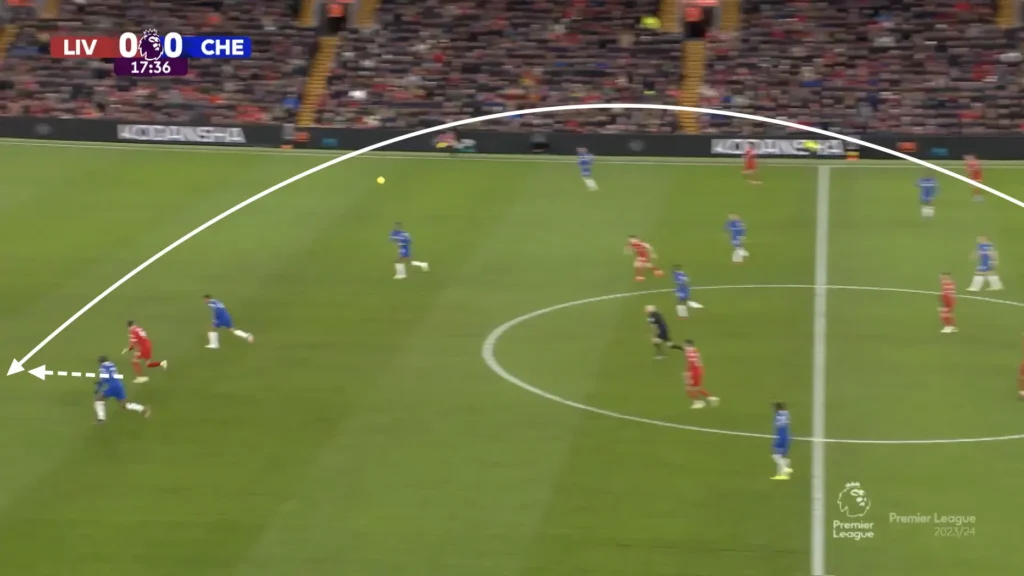
They did this a lot at the beginning of the game, which forced Chelsea to drop their defense very low. From there, Liverpool could, with their counter-press, control Chelsea and keep possession for long periods.
High Build-up
In the high build-up, Liverpool would rotate into a 1-2-2-5-1 formation, pushing the left-back into the defensive midfield, the right-back up on the wing, and the right-winger into the attacking midfield.
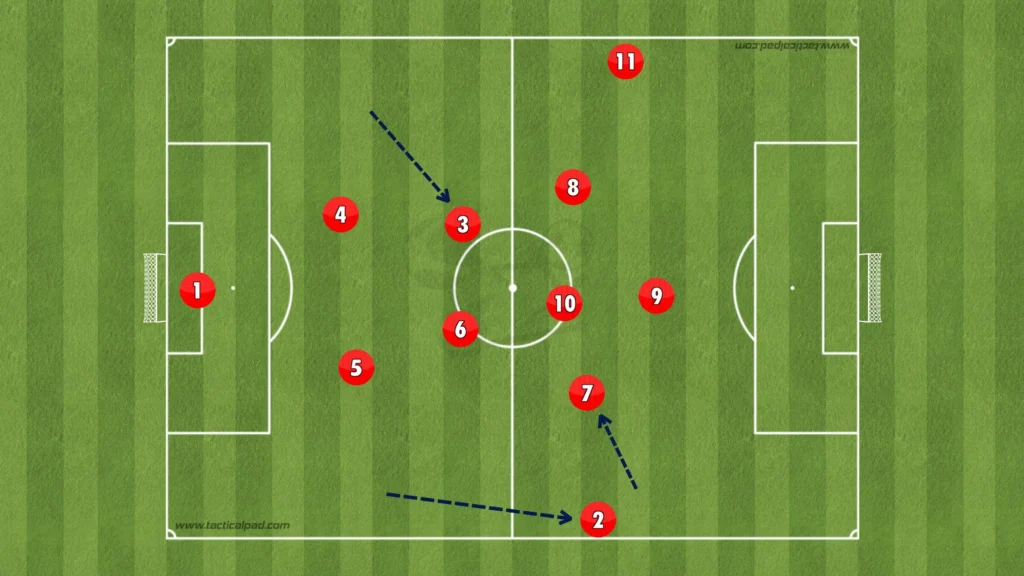
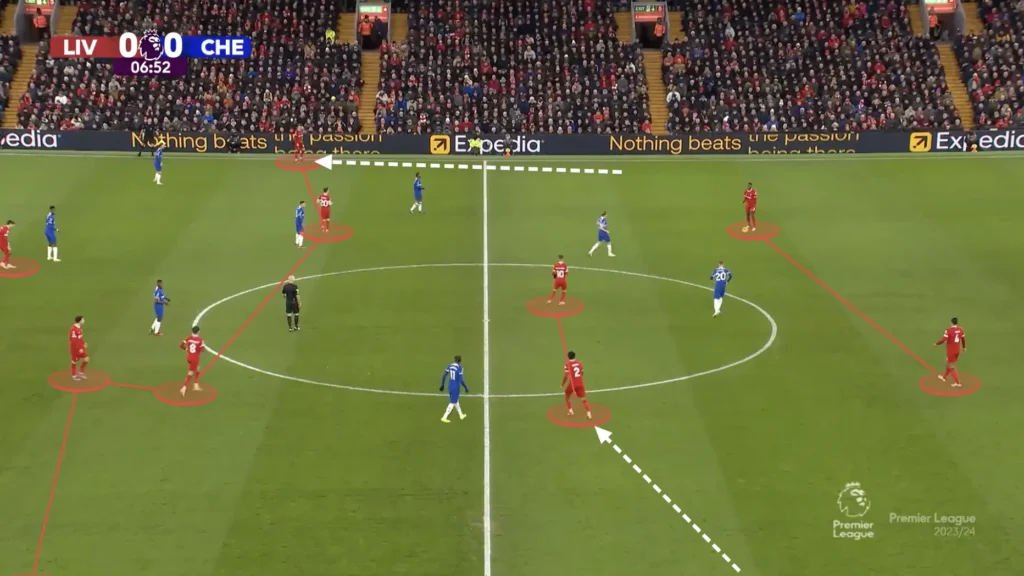
Because Chelsea defended with two forwards, the inverted left-back would sometimes drop back into the backline to turn the formation into a 1-3-1-5-1. This created a three at the back and numerical advantage against Chelsea’s two forwards, which allowed them to beat the line and progress the ball.
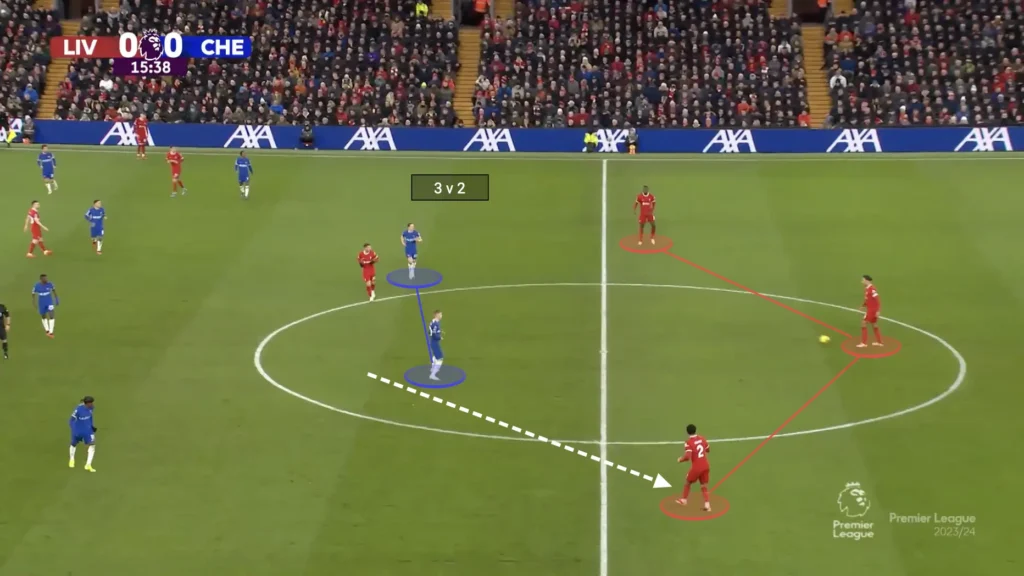
Many Players in the Box
The attacking midfielders also looked to make runs into the box when the ball was in the final third, often getting four or five players into the box, creating an overload. The numerical advantages in the box forced Chelsea to make decisions and leave some players open. Jürgen Klopp also positions many players outside the box, ready for the second-balls and cut-backs.
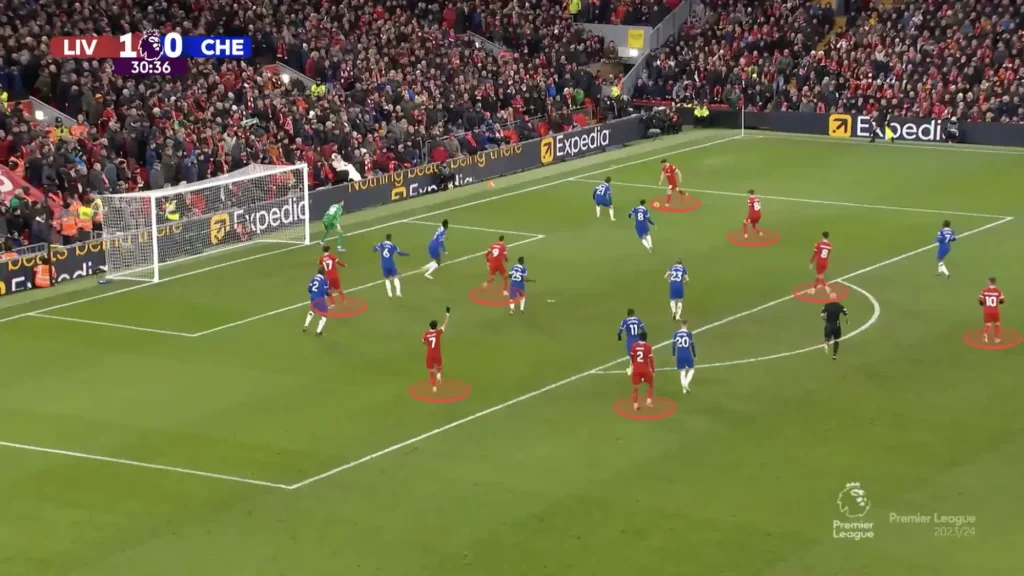
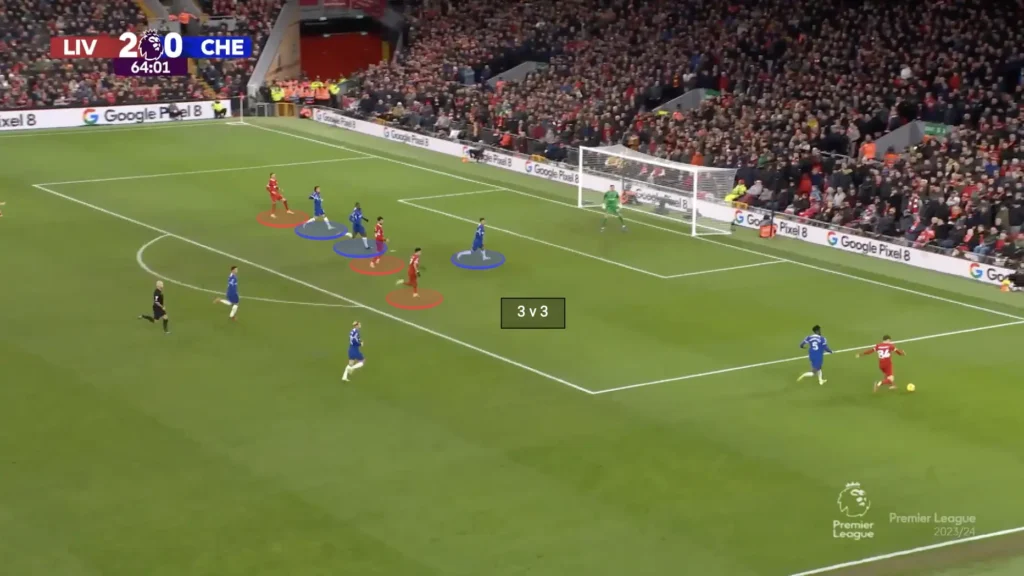
Defending
Low Press
Liverpool used a 1-4-3-3 formation in the low press. They looked to set up in a mid-block, always trying to push up when possible.
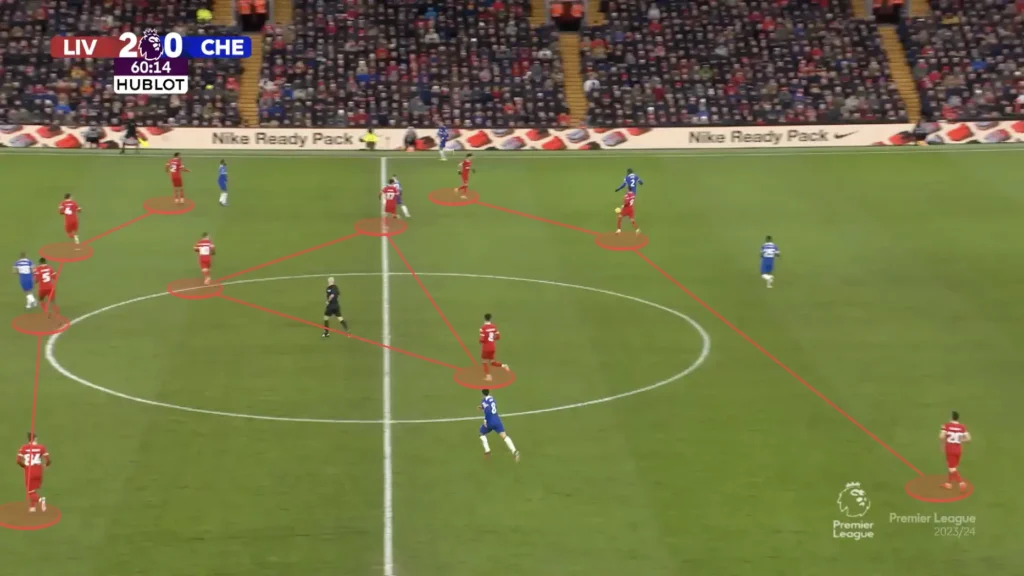
High press
Liverpool looked to press Chelsea whenever they could and did so successfully during the game. They would go into a man-man system and press with high intensity, sometimes winning the ball in dangerous areas:
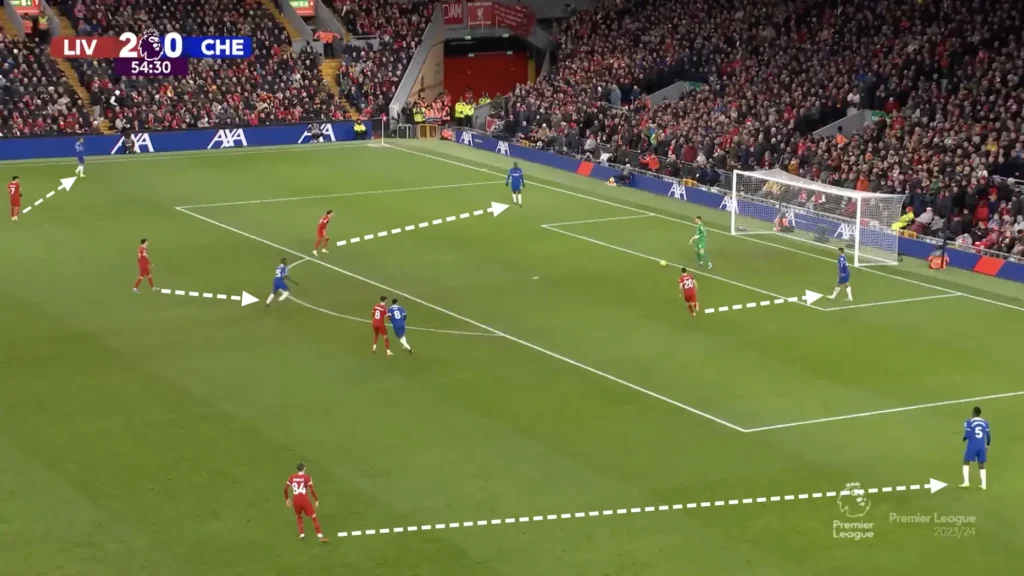
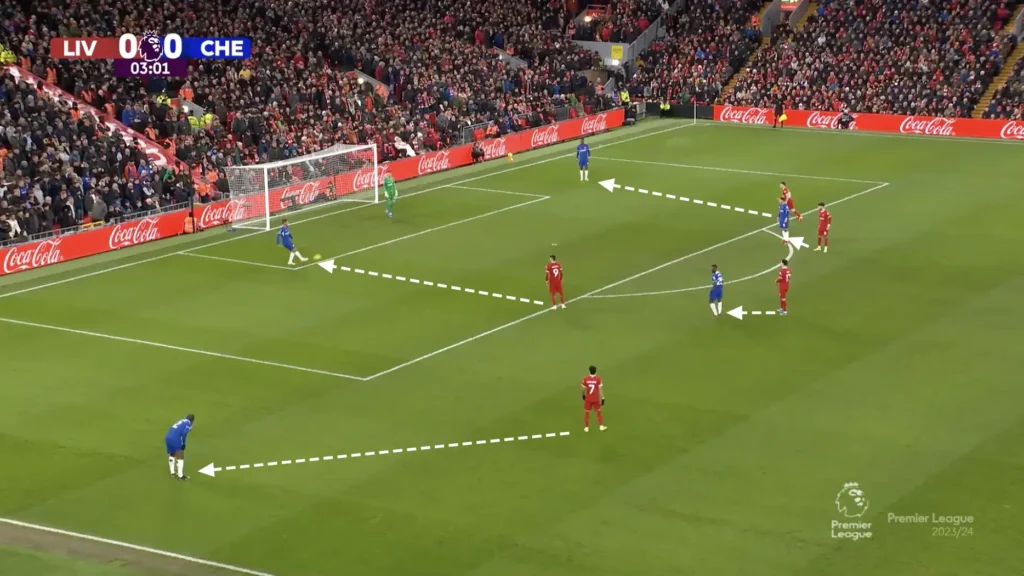
Low Press -> High Press
Liverpool was great at transitioning from their low press to their man-to-man high press. The right-winger would push up on one of the center-backs, the right-back would push up on the left-back, and the right center-back took care of the left-winger, creating the man-to-man high pressing system.
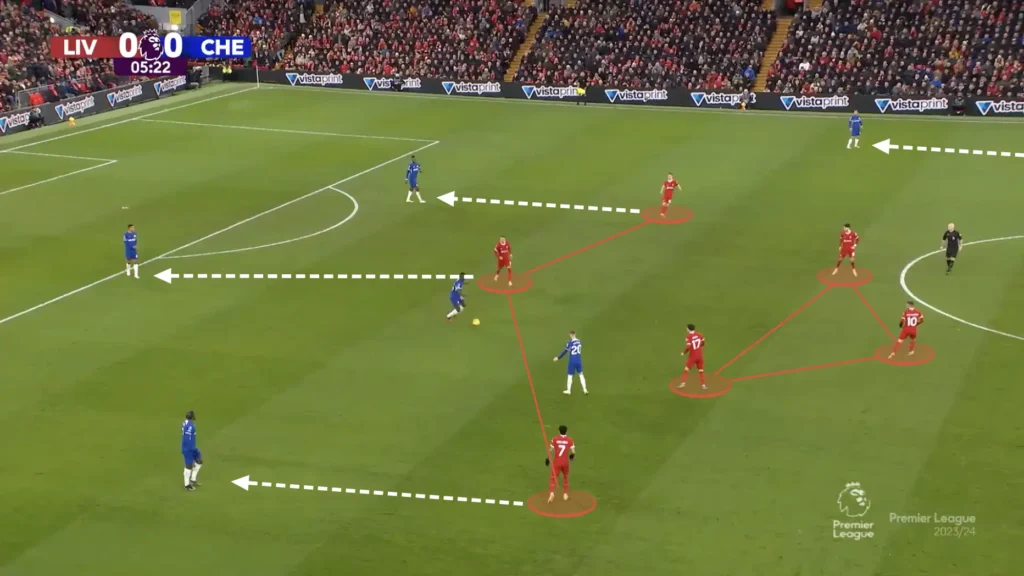
Transitions
Positioning many players centrally, creating a numerical advantage in the midfield, creates good conditions in defensive transitions. Liverpool had many players close to the ball after losing possession, which meant many could work together towards regaining possession. Liverpool, therefore, often succeeded in regaining possession directly after losing it, never allowing Chelsea to create counterattacking opportunities.
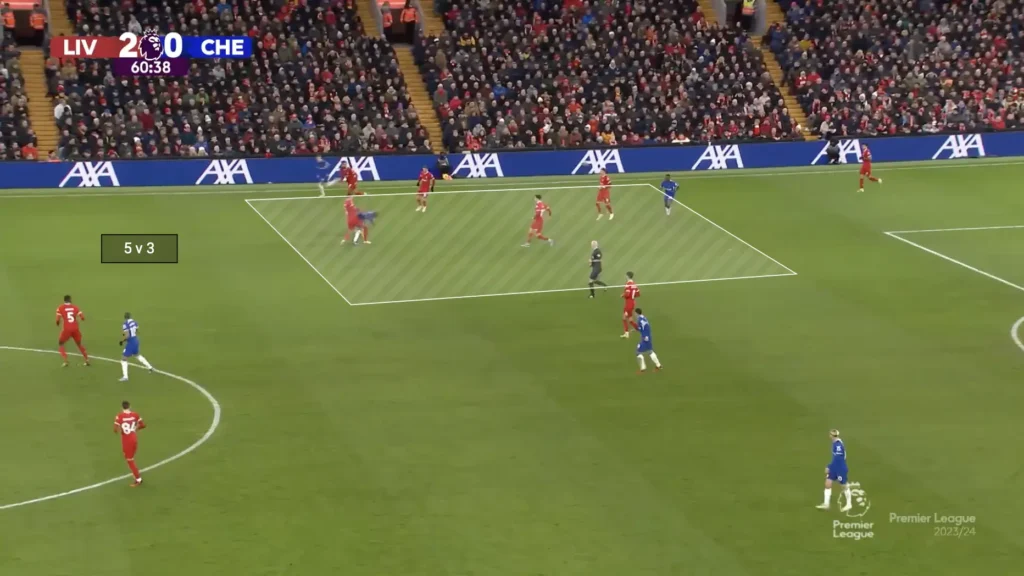
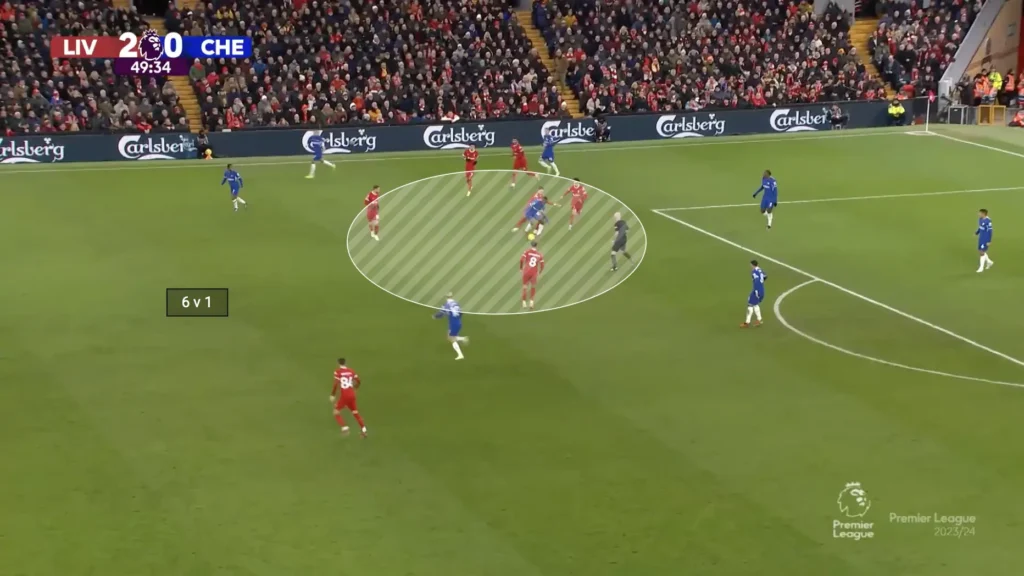
Chelsea
Build-up
Low Build-up
In the low build-up, Chelsea used a 1-4-2-3-1 formation, with Palmer playing as a number 10 and Gallagher playing up front as a number 9.
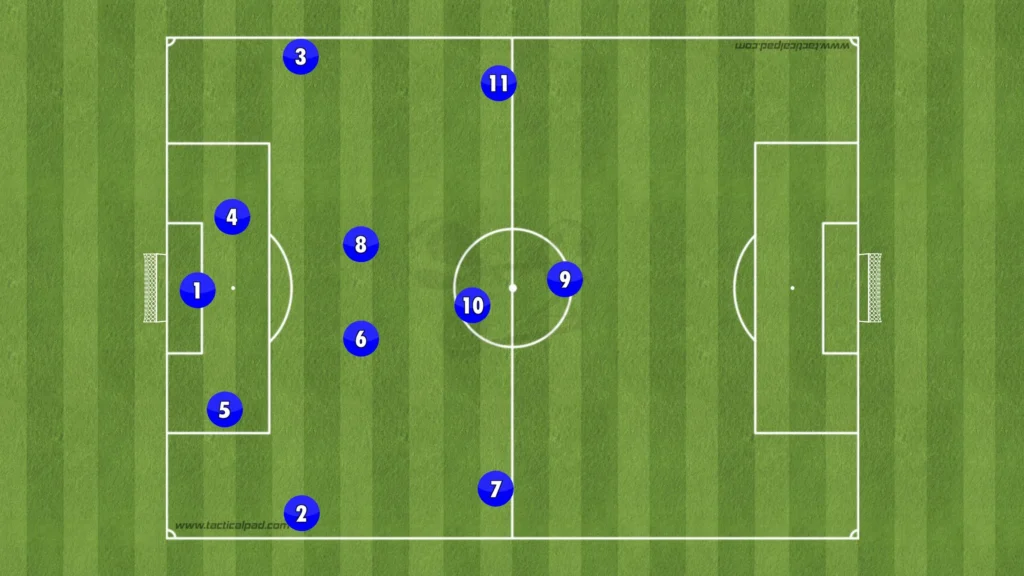
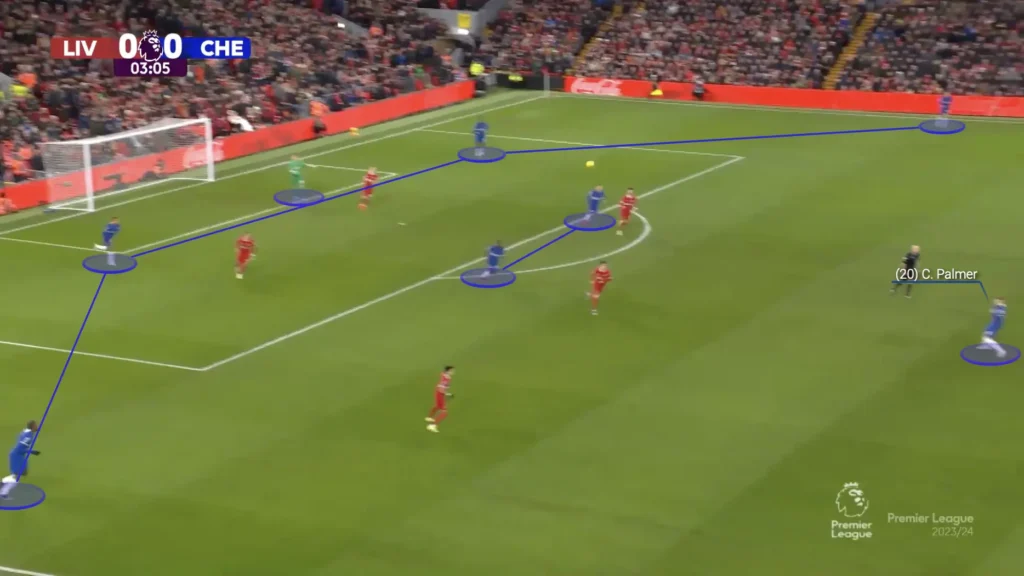
Rotations and Interchanges
In this game, Chelsea wanted to be fluid within the system and to find different interchanges and rotations. Not having a natural number nine allowed the midfield players to rotate a lot, causing confusion and disharmony for the Liverpool defense. Here, Gallagher drops into the midfield from his striker position while Fernandez pushes up, which forces Liverpool to react in some way.
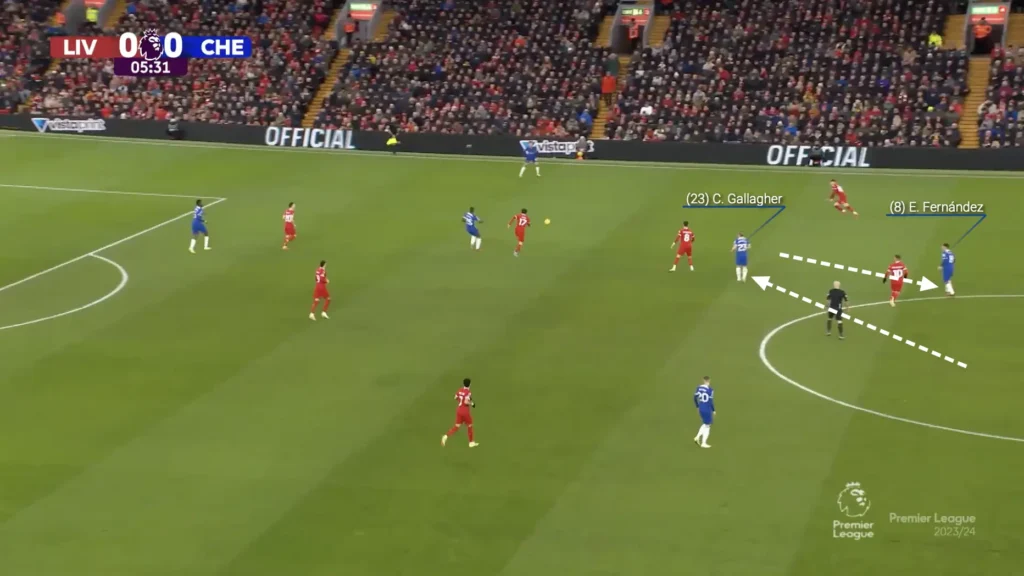
When Gallagher dropped, he and Palmer could also create a 2v1 against Liverpool’s number six. This sometimes allowed Chelsea to beat Liverpool’s press or draw out Liverpool’s center-backs to create space in behind for the wingers.
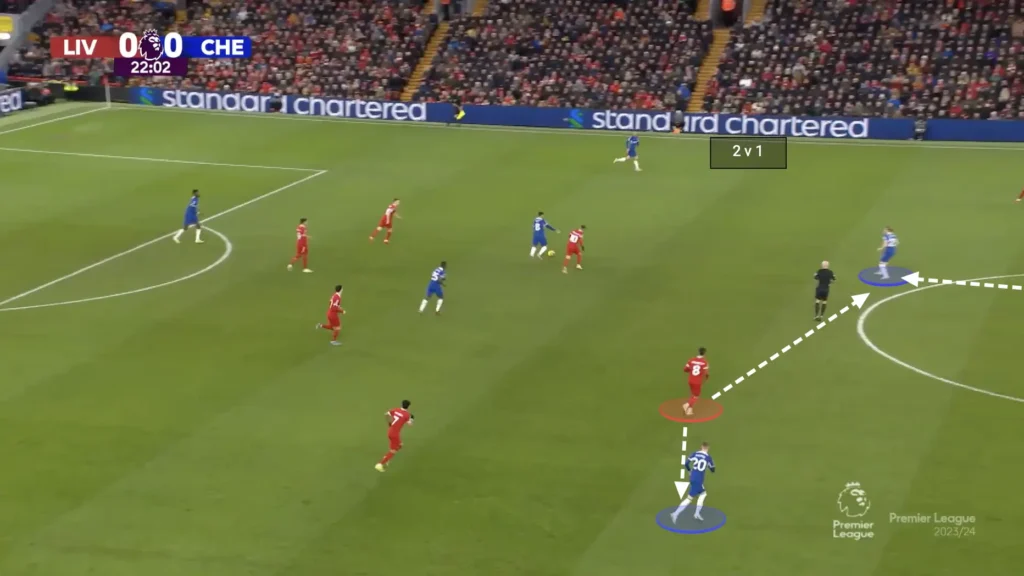
High Build-up
In the high build-up, Chelsea would rotate into a 1-4-3-3 formation. They would still find rotations and interchanges, but they could rarely beat Liverpool’s solid defense.
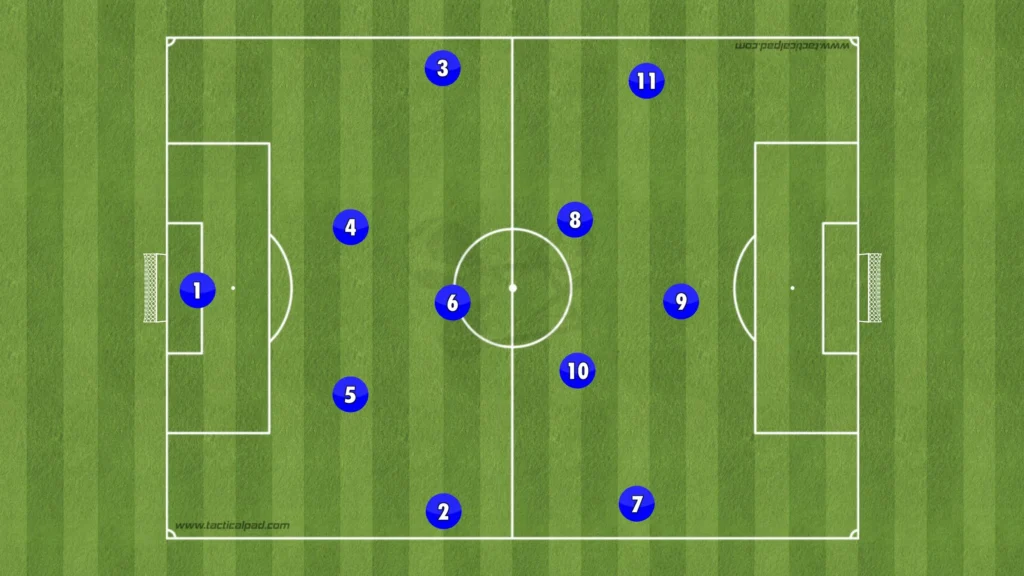
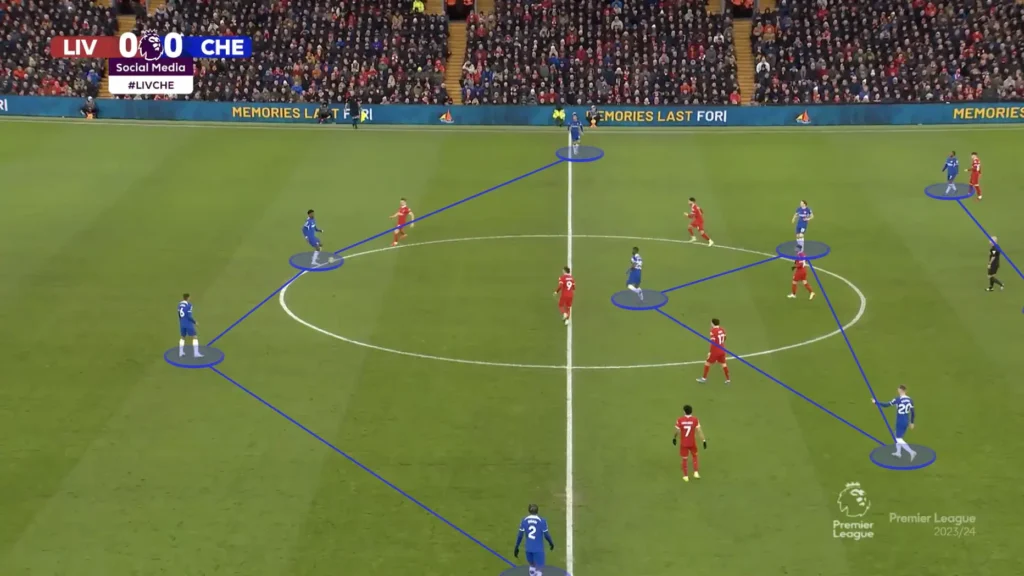
Third-man and Balls in Behind
When Liverpool’s right-winger came to press Chelsea’s left center-back, Chelsea often used the third-man principle to find the open left-back.
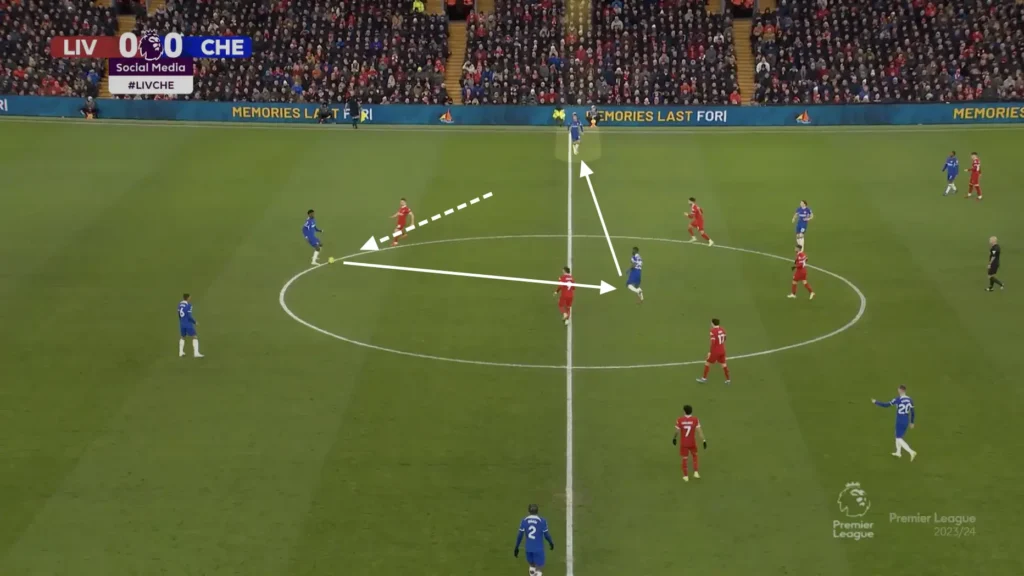
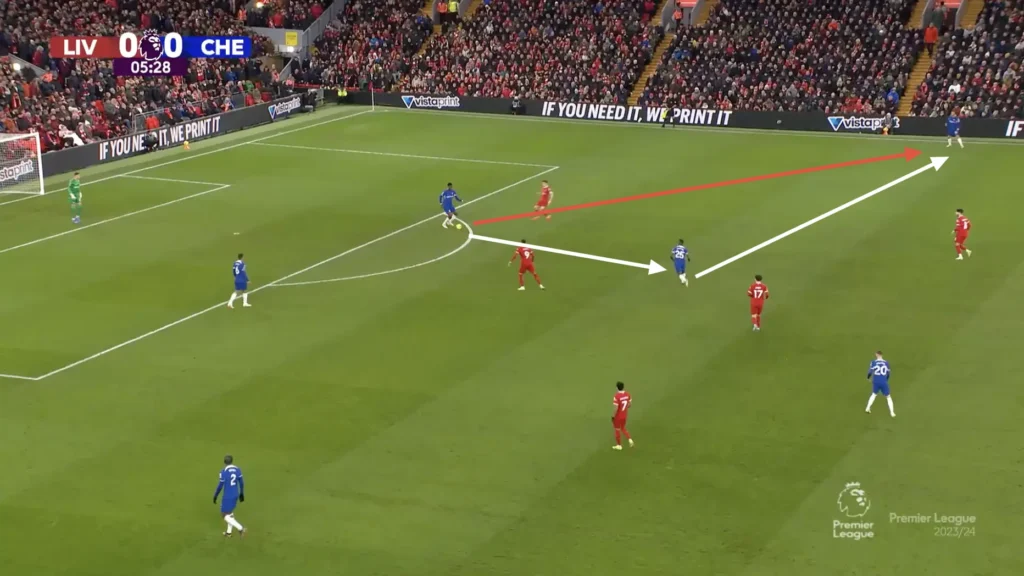
Liverpool’s right-back would then push up and press the left-back, opening the space in behind for Chelsea’s left-winger. The ball would be played in behind Liverpool’s backline, giving Chelsea opportunities to create chances.
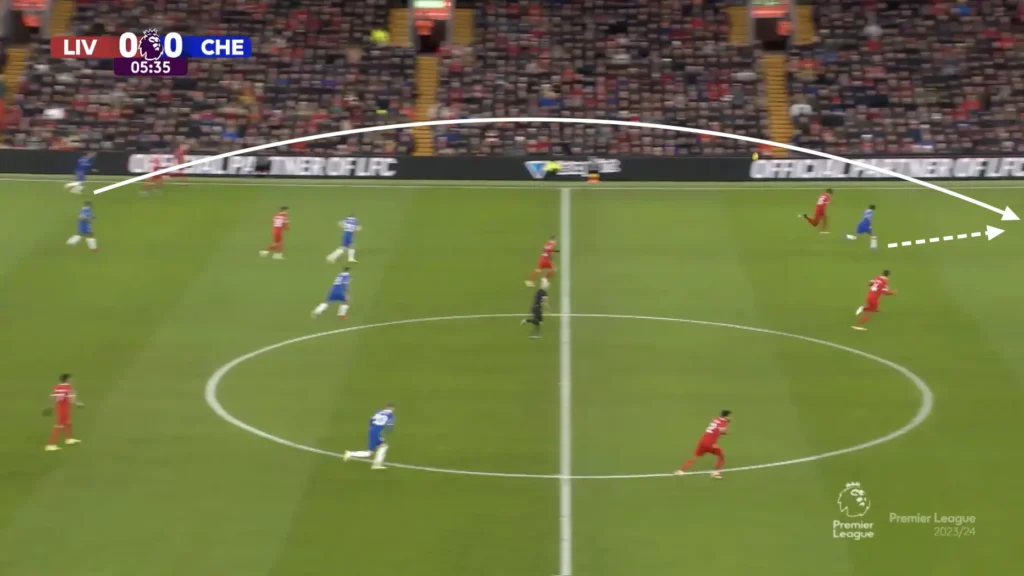
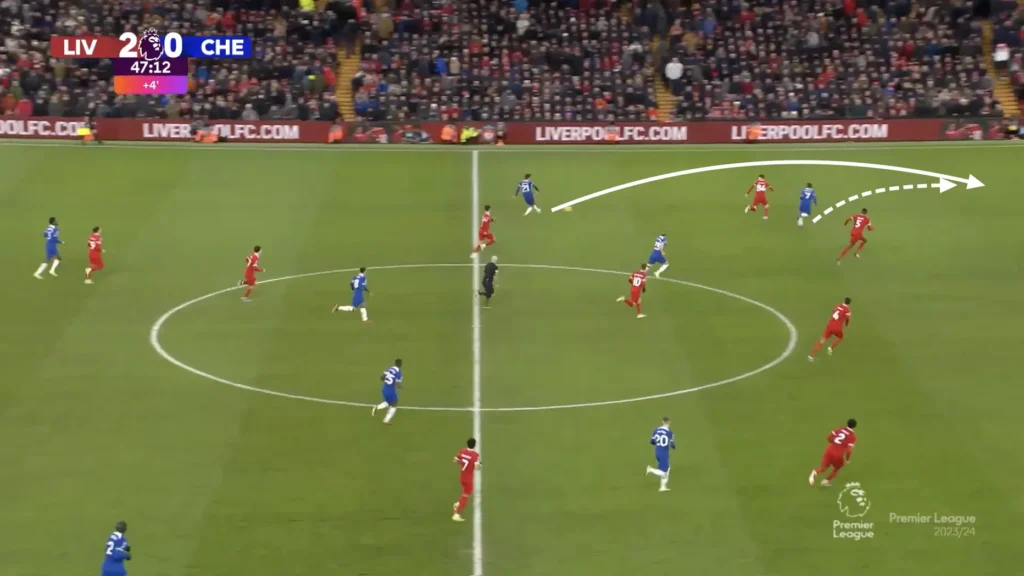
When the ball was played in behind the Liverpool backline, Chelsea would have many players running into the box from the middle, often creating a numerical superiority against Liverpool’s defending players. This was perhaps Chelsea’s only source for goalscoring opportunities during the game.
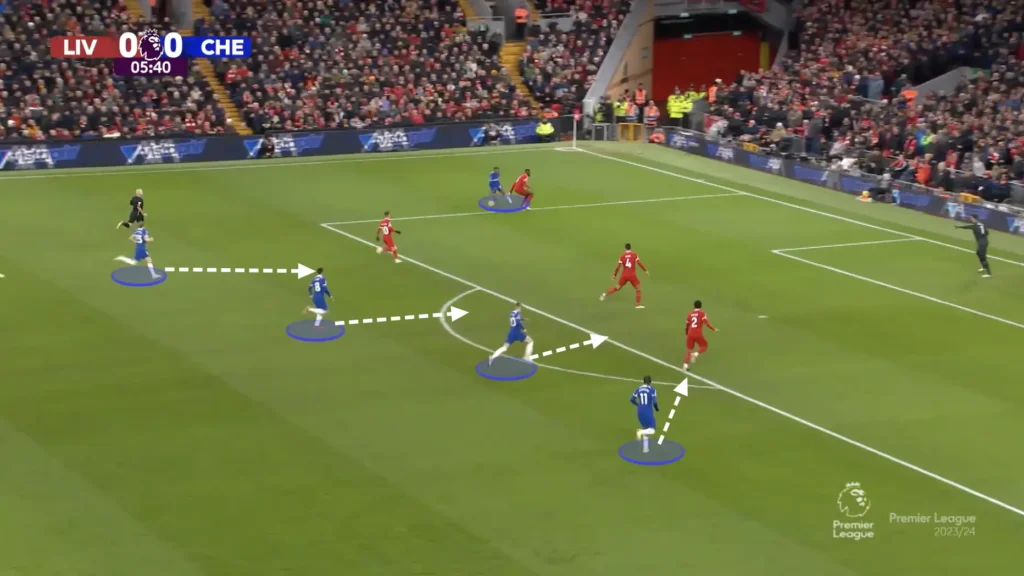
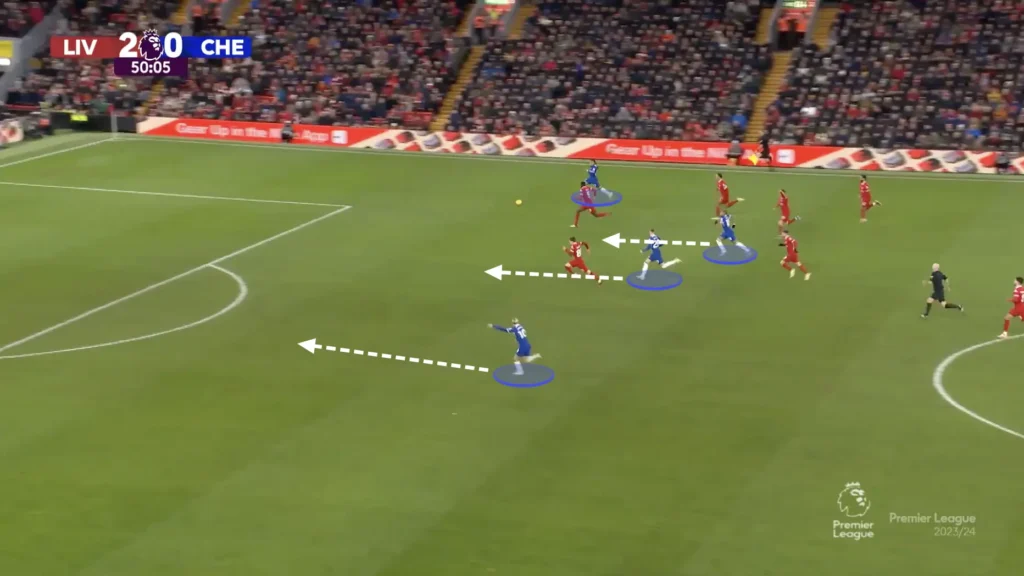
Defending
Chelsea used a 1-4-4-2 formation when defending. They looked to set up in a low-block, always trying to stay compact while closing the center, forcing the opposition out wide.
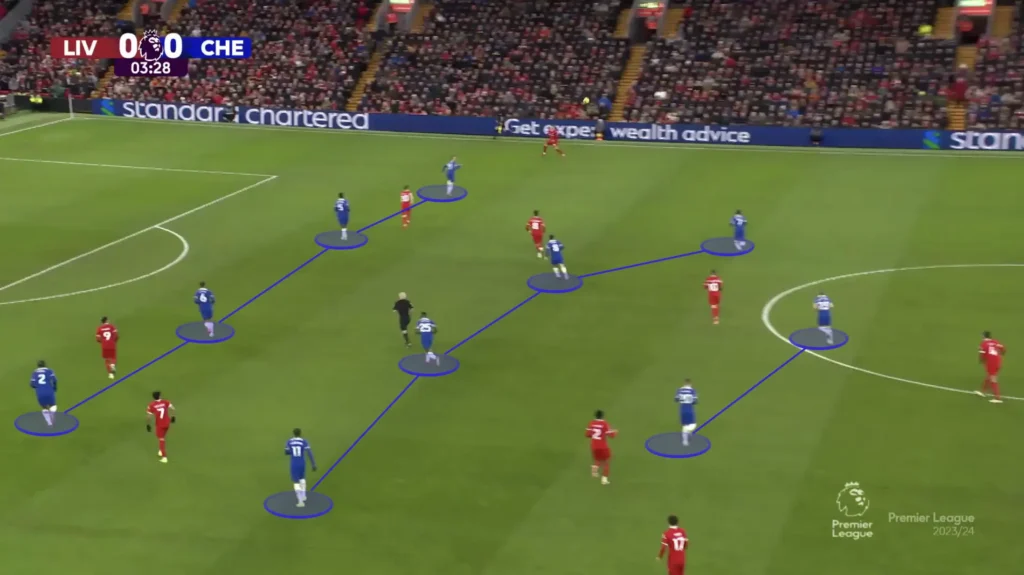
An issue that Chelsea had was that they often became too low. Liverpool would push them back with their counter-press and constant threats in behind, which created too much distance between them and the Liverpool goal. This made it even harder for them to find counter-attacking opportunities in offensive transitions.
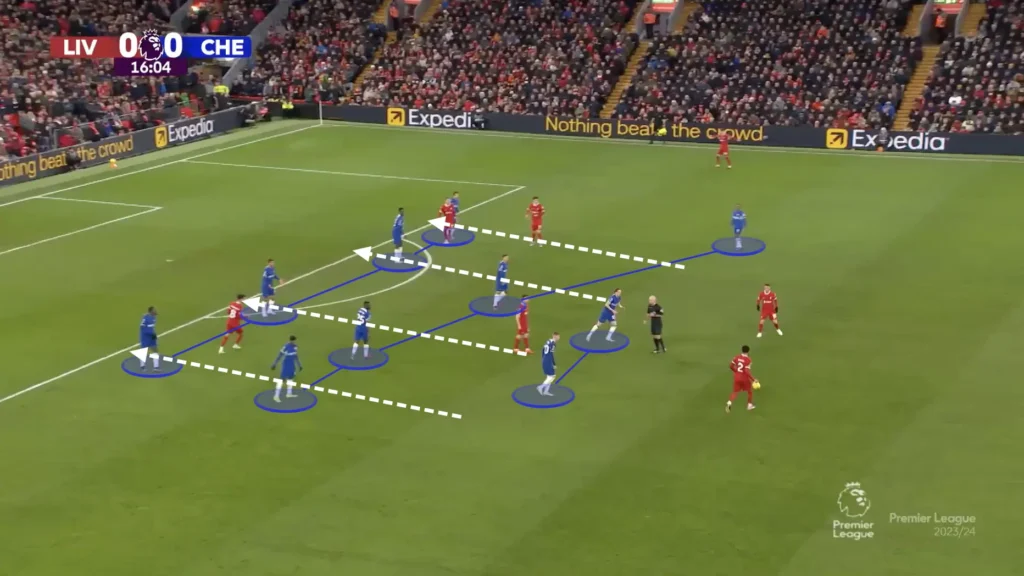
Final Thoughts
In conclusion, the clash between Liverpool and Chelsea(31/1 – 2024) showcased a captivating tactical battle on the football field. This tactical analysis has peeled back the layers, exploring the strategic decisions, formations, and key player movements that unfolded during this high-stakes encounter. Both teams, guided by astute managers, demonstrated resilience and adaptability, making it a chess match of wits.
From Liverpool’s high press to Chelsea’s defensive solidity, each aspect played a crucial role in shaping the ebb and flow of the game. As football enthusiasts, we witness not only the physical prowess of the players but the intricate maneuvers and strategic brilliance that define modern football. The Liverpool vs Chelsea clash goes beyond a mere match; it’s a study of tactics, a narrative of skill, and a testament to the ever-evolving nature of the beautiful game.





